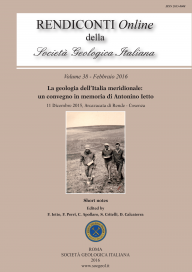
Geology and conservation of cultural heritage: the study case of the Forty Martyrs rupestrian church in Şahinefendi area (Cappadocia, Turkey)
Natalia Rovella (a), Stefano Marabini (a), Gino Mirocle Crisci (a) & Mauro Francesco La Russa (a)
(a) Department of Biology, Ecology, Earth Sciences, University of Calabria, via Pietro Bucci 87036 Arcavacata di Rende (CS), Italy. Corresponding author e-mail: nataliarovella@gmail.com
Volume: 38/2016
Pages: 89-92
Abstract
Cappadocian region is an unique ignimbrite landscape created by Neogenic volcanic activity and moulded by tectonics, climate and relative phenomena as erosion and freeze-thaw cycles. The earth pyramids represent the typical morphostructures produced by erosion in this context; here they are called "Fairy Chimneys" and are famous for hosting, from the Palaeolithic age, the population of the area, in particular the first Christian monastic communities and their painted rupestrian churches. Nevertheless the same environmental and geological context that in the past promoted the development of these structures, nowadays risks to threaten their conservation. The work is focused on the reconstruction of the geological and stratigraphic setting of the Forty Martyrs church area a typical rupestrian monastic settlement and the identification of critical elements threatening the structure in the time.
Keywords
Get Full Text